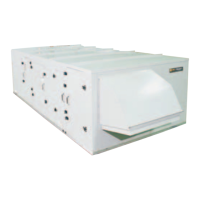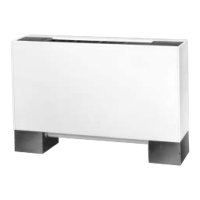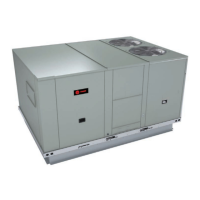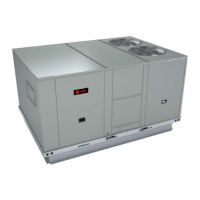FAXA-SVX01B-EN 63
Operation
general
information
Establishing Capacity
Requirements
Determining the FAU capacity
requirements requires careful thought. Air-
handling equipment is typically selected
based on design sensible conditions. Since
latent loads drive the need for the FAU,
base the selection on design latent
conditions. For more detailed information
on this subject, see the
Trane Packaged
Fresh Air Unit catalog, MUA-PRC004-EN
.
Cooling and Dehumidification
Selection Criteria
Evaporator Design Entering Conditions
For many climates the peak outdoor air
enthalpy occurs at a time when the
outdoor dry-bulb temperature is not the
highest. Refer to the chapter on climatic
design information in the
ASHRAE
Handbook of Fundamentals
. The cooling
and dehumidification design condition
data is provided three ways:
1. Design dry-bulb temperature with mean
coincident wet bulb temperature
2. Design wet-bulb temperature with mean
coincident dry-bulb temperature
3. Design dew point temperature with
mean coincident dry-bulb temperature
The design wet-bulb condition typically
represents a significantly higher outdoor air
enthalpy than the design dry-bulb
condition. Use the condition that
represents the highest enthalpy as the
entering evaporator selection condition.
Evaporator Design Leaving Conditions
Due to the uncertainty of the local terminal
unit’s latent capacity at part load, it is
usually most straightforward to size the
FAU to handle the entire latent load on the
system, both indoor and outdoor. With this
design approach, the terminal units may do
some latent cooling (dehumidification)
during periods of higher sensible load. At
these times, the space will run slightly drier
than the design RH limit. This is why it
makes sense to select the FAU to limit the
space RH to a maximum allowable level for
those conditions when the terminal units
are providing no space latent cooling.
ASHRAE Standards 62.1 and 55
recommend using 60% RH design limit for
comfort cooling. Using lower design limits
may result in an unnecessary increase in
system operating energy use.

